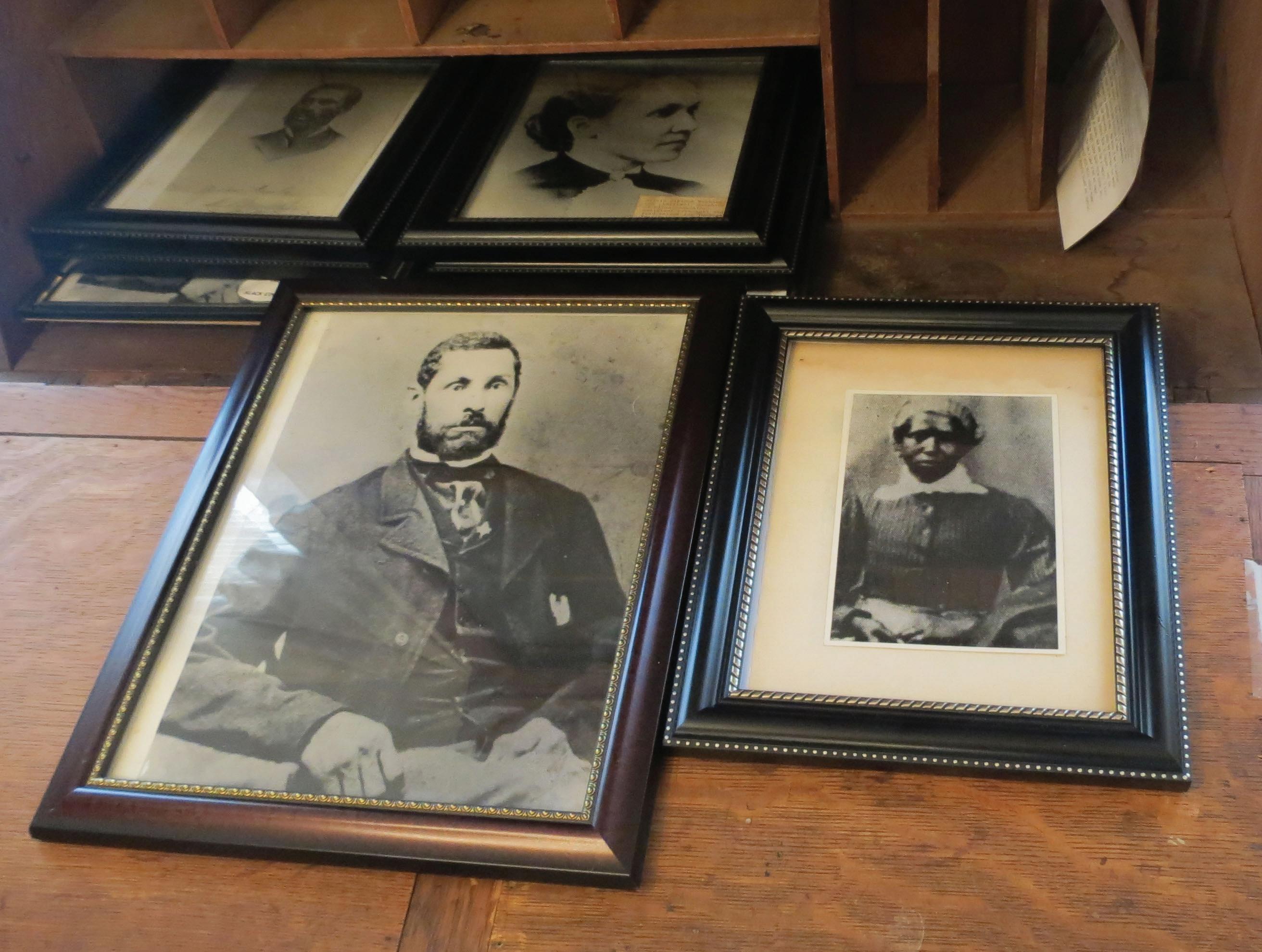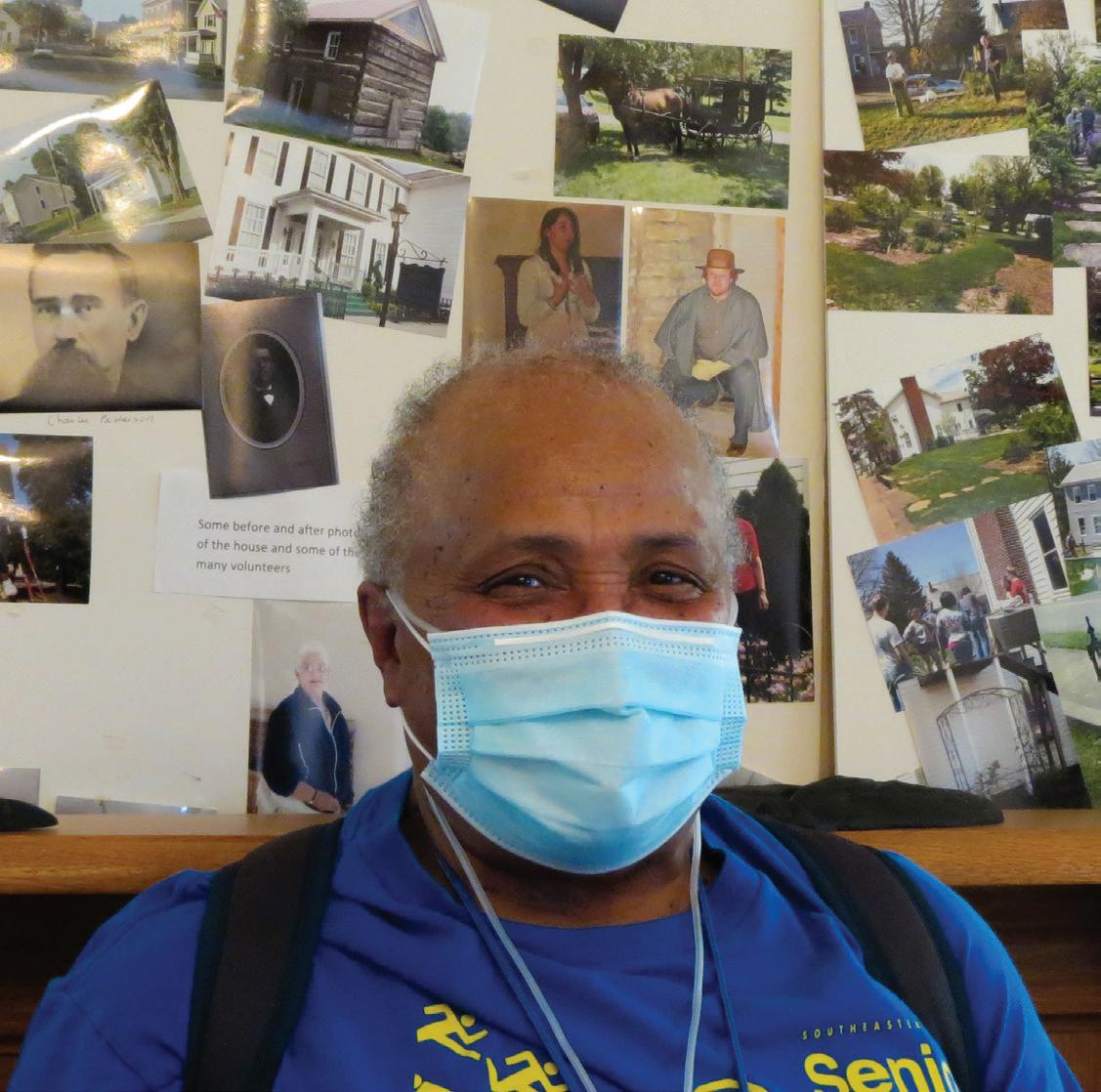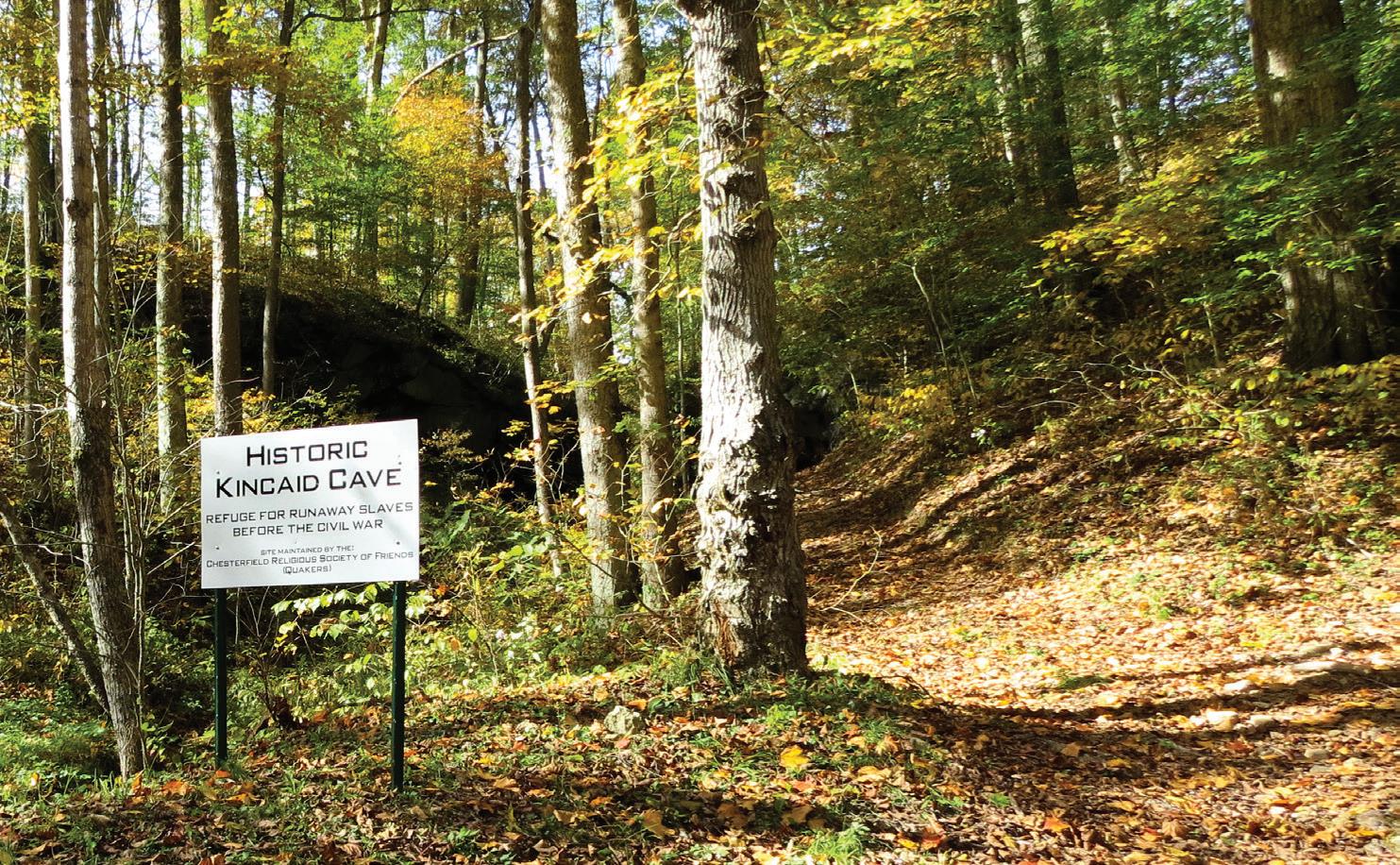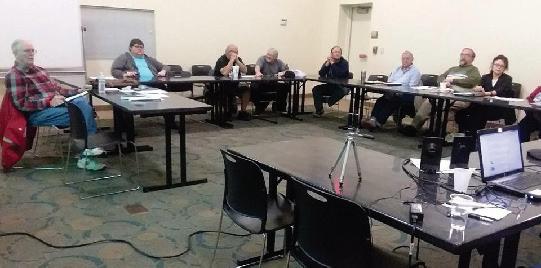
3 minute read
A Tale of Two Stations
Historic photos on display at the Multicultural Genealogical Center.
Explore the History of These Hidden Underground Railroad Stops
STORY BY DESTINIEE JARAM | PHOTOS BY LAUREN PAPP
In the 19th century, over 40,000 people traveled the it, and I always loved the house,” McCarthy says. Underground Railroad of Southeast Ohio on their “It was like coming back home or something. The journey to freedom from slavery. These routes furniture I had left 25 years before was still here; an were quietly traveled by conductors and slaves envelope was even addressed to me on the floor.” seeking freedom during the 1800s. The locations and McCarthy says he heard rumors from Millfield hiding spots of the Underground Railroad were such residents that the Weethee house was part of the well-kept secrets—they are still being discovered. Underground Railroad. He contacted Weethee’s great-granddaughter, A SECRET RING Bernarda Bryson-Shahn. Bryson Shahn, an artist, told
A former station on the Underground Railroad McCarthy she and a friend were once playing in the sits in Millfield: The brick Weethee home was a refuge attic when they found a large ring attached to a door. for escaped slaves during the 1840s and 1850s. When lifted, the ring revealed a stairway.
Abolitionist Daniel Weethee built the house in In the dark and cramped stairway, enslaved 1804. It is centered around an exceptionally large Americans would spend days and nights silently brick chimney. The chimney is no longer functional, hiding in the home of benevolent strangers, trusting but like the rest of the 216-year-old building, it is them to protect their safety as they traveled for made of the original wood, stone and brick. freedom on the Underground Railroad.
The current owner, Dane McCarthy, lived in the The hideaway for freedom seekers in the house in his 20s and bought it more recently. Weethee house is now concealed in a seven-foot-
“I bought the house because I used to live in tall walk-in closet. Aside from a door and a step
added by McCarthy, the hiding place is untouched— entrenched in history—like the rest of the home.
INTERTWINED
Ada Woodson Adams helped found the Multicultural Genealogical Center (MGC) in 1999. The Chesterhill organization records Southeast Ohio’s blended cultural history.
In 2005, the MGC bought an abandoned house in Chesterhill because the building was rumored to be an Underground Railroad stop. The Bye Quaker family built the house, which was originally a log cabin, around 1859. Other Quaker families lived in the house for over 160 years.
Reynoldsburg United Methodist Church and Chesterhill residents renovated the house after the MGC bought it. They helped with painting, plumbing and HVAC, but the historical status of the house remained in question.
Then a Reynoldsburg volunteer—whose family had owned the house in the 1980s—confirmed that it was an Underground Railroad station.
“That just blew my mind—that it was part of the history of the Underground Railroad,” Adams says.
The hiding place is in the basement, tucked behind shelving. The basement’s current ceiling beams are constructed of hand-hewn wooden logs saved from the original cabin. The walls are made from the initial basement’s brown, white and red sandstone and fieldstone. Most of the building’s original locks, windows, doors, walls, floors and railings remain.
Upstairs is a large cabinet that opens into a desk full of history and artifacts. As Adams takes books out, she rattles off decades of local history as if it were her own family’s history.
“As we research our history, we discover these untold stories of Black history,” Adams says. “You have to listen to all voices because we are intertwined.”

ABOVE: Fugitive slaves often took refuge in historic Kincaid Cave.

– Ada Woodson Adams
ABOVE: Adams helped found the Multicultural Genealogical Center in 1999.










